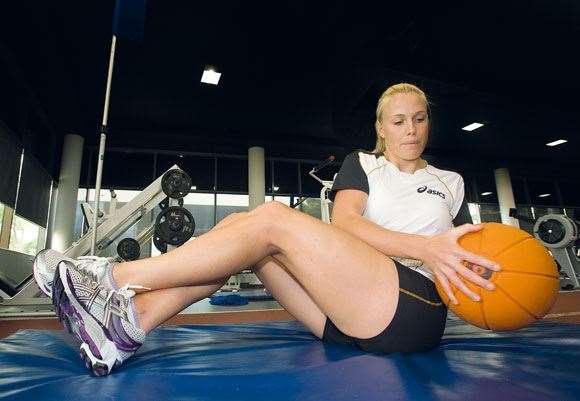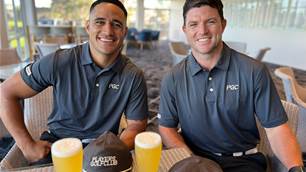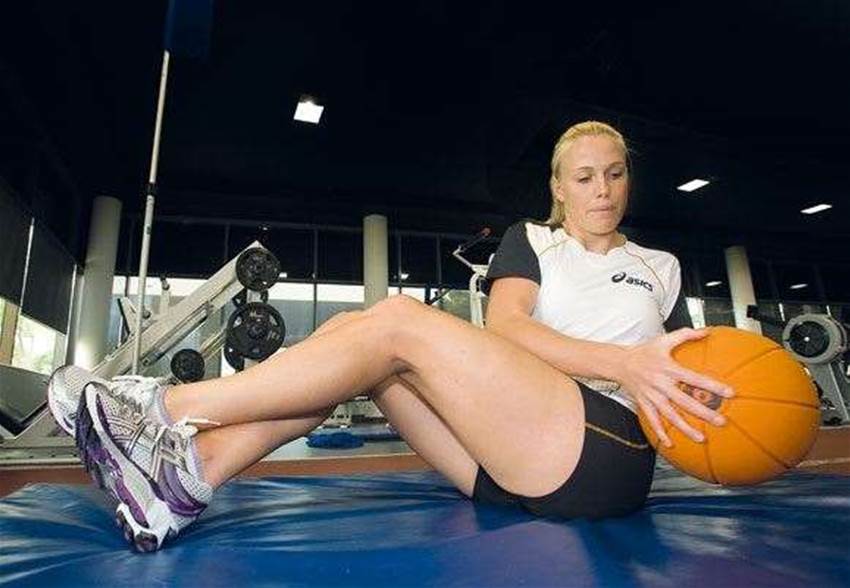Over the off-season the girls have been sweating out the nightmares of ’09. Here, powerhouse centre Kimberlee Green reveals the regime that aims to drag the Swifts back to the peak of the ANZ
Over the off-season the girls have been sweating out the nightmares of ’09. Here, powerhouse centre Kimberlee Green reveals the regime that aims to drag the Swifts back to the peak of the ANZ
 Getting drilled
Getting drilledThe “premiership hangover” is a peculiar phenomenon generally attached to boofheaded footy players. But don’t think girls are immune … Back in ’08, the inaugural year of the ANZ Championship, the NSW Swifts swept all before them. They finished the regular season with ten wins and a mountain of goals. In the major semi they travelled to Hamilton and edged the Waikato Magic by a single goal. Come the final there was an air of inevitability; 12,000 Sydneysiders flocked to Acer Arena to watch the Swifts demolish the Magic by nine goals. Stocked with talent and coursing with confidence, the Swifts looked to be building a long and regal dynasty.
Then the wheels fell off. In their second year the Swifts couldn’t string a pair of wins together. Luck deserted them: they lost two games in extra time, lost three other games by a single goal. Form deserted them: in round three the Magic topped them by 18 goals, in round 11 the Vixens topped them by 11. The mighty had fallen. They finished the season with just two wins to their credit.Don’t expect a repeat performance this year. Over the off-season the girls have been sweating out the nightmares of ’09. Here, powerhouse centre Kimberlee Green reveals the regime that aims to drag the Swifts back to the peak of the ANZ
Fast feet
“Before we head to the gym, we normally do a sprint session. We start off very short – sprinting over two metres, four metres, six metres. We do these from a normal standing start – it’s all about quick turnover in the legs. In netball you often don’t have time to set up a good starting position before you run, so with these sprints we work on starting from a variety of different positions. We also do a drill called rolling backs, where we jog backwards, our trainer calls go, and we’ll have to explode out of the jog into a short sprint. It’s very much a reactive drill. The trainer also mixes it up; for example sometimes he’ll call jump and we’ll have
to jump before exploding into the sprint.“After that we normally do a drill called five-ten-five, where you have to run to your right for five metres, push off, run to your left for ten metres, push off, then run back to your right for five metres. During the season we’ll normally add to these drills – for example we’ll lay a rope ladder on the floor and have to run over it, our feet landing in the spaces, the emphasis on fast, light feet.”
Practical strength
“Recently we’ve had a few back problems in the squad so we’ve started a new regime for our core strength called physiocise.
It’s all about doing un-weighted exercises that work your gluts and quads, but also force you to switch on your core as you
do them. There’s a lot of static squats, where you’re resting against a wall, a lot of lunges and a lot of floor work where we work some movement into the back. It’s all about using the right muscles – your core, gluts, hammies – to control the movement and hold your posture. We do physiocise before we go into a weights session and it normally lasts for 45 minutes – a definite leg burner!“We also do a lot of bridging on Swiss balls. For example we’ll lie on our backs, place our feet on the ball, then lift our bums up so we form a plank. Again, it hits the hammies, gluts and core. Occasionally we use weight plates in our core work. ‘Russian twists’ are a good one – we hold a sit-up position, our feet off the ground, holding a ten-kilo plate in front of us, and then twist from side to side. We also use sandbags to add a practical element in our core work. We lie flat on the floor with a sandbag weighing ten kilos on our shoulders, and then we have to get up to a standing position using just the one hand while holding the sandbag on our shoulder. Again, the focus is on maintaining complete composure through the core as you’re doing a certain movement.”
Related Articles

Viva Las Vegas: Join Golf Australia magazine's Matt Cleary on a golf and rugby league spectacular

19 Holes With ... Chad Townsend and Val Holmes







.jpg&h=115&w=225&c=1&s=1)
.jpg&h=115&w=225&c=1&s=1)




